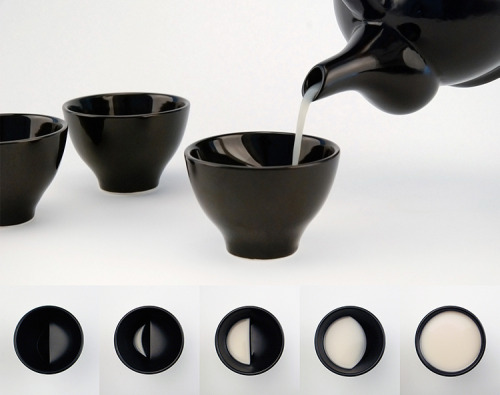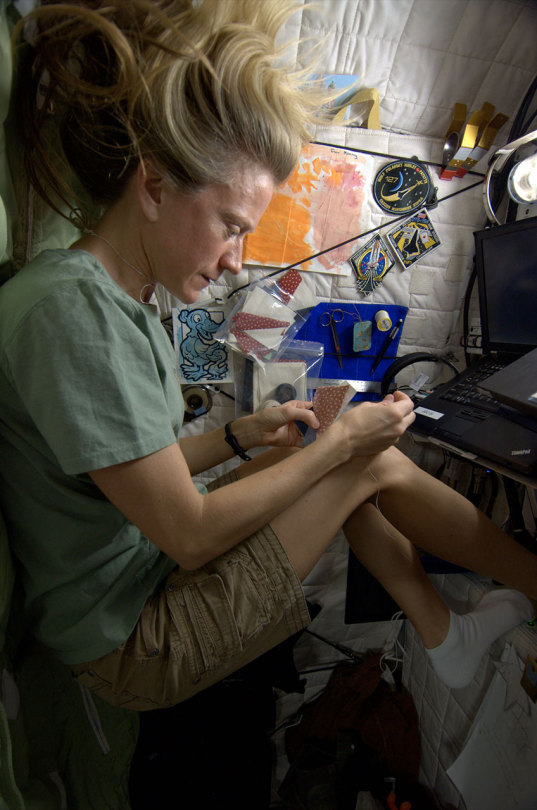Two Very alarming Changes Have Already Been Made On The White House Website. Reason, Empathy And Progress



Two very alarming changes have already been made on the White House website. Reason, empathy and progress must be fought for. I hope this isn’t indicative of upcoming policies but fear it obviously is.
Also I just edited this post to add my own screenshot: the White House’s website for combating antibiotic resistant bacteria is gone too.
I want to note that most of the great steps of social progress in American history were *not* made by presidents or politicians acting of their own accord. America thrives in a state of constant *peaceful* revolt. Protest, political dissent and civil disobedience are what change things.
Voting is great and we need more to do it, but the women’s suffrage movement didn’t get voted into victory. Republican President Nixon (Nixon!) didn’t create the Environmental Protection Agency because he had an environmentalist’s stance on the Earth.
It’s important to always remember that when people wield their concerns and press power to answer for itself, they change the world.
(Images courtesy of screenshots from a friend and from myself)
More Posts from Maevetheeuropan and Others






Moon Glass: A Ceramic Cup That Showcases the Different Phases of the Moon the More You Drink From It
South Korean design studio Tale Co., Ltd. has created an ingenious ceramic liquor called the Moon Glass, which displays different phases of the moon as you drink from it. The adorable glasses are available to purchase on their website.


NASA astronaut Karen Nyberg is a self proclaimed crafter. A week ago she made a stuffed dinosaur from scraps on the space station. The little T-rex is made form the lining of Russian food containers and the toy is stuffed with scraps from an old T-shirt. While many toys have flown into space, this is the first produced in space.
Photos: Karen Nyberg, via CollectSpace

New Hubble Portrait of Mars (which will be at its closest to us on 30 May)
On May 12, 2016, the Hubble Space Telescope captured this vivid photo of Mars, when the planet was closer to Earth than usual and approaching the opposition (when the sun and Mars will be on exact opposite sides of Earth). Mars is especially photogenic during opposition because it can be seen fully illuminated by the sun as viewed from Earth. Mars will reach opposition on May 22.
Furthermore, the closest approach to Earth for the year will occur on 30 May, when Mars will be at a distance of 75.28 million km (46.78 million miles) from us. For comparison, the average distance between the two is 225 million km. These two events so close together make the coming week(s) the best time to observe the red planet with a telescope. You can already notice it in the night sky (check for your location) as one of the brightest dots with a red-orange glow near the Moon.
Read about the Hubble’s image here.
Image credits: NASA, ESA, the Hubble Heritage Team (STScI/AURA), J. Bell (ASU), and M. Wolff (Space Science Institute)


The Soul Nebula Pictured, bright massive stars near the center of W5, the Soul Nebula, are exploding and emitting ionizing light and energetic winds. The outward-moving light and gas push away and evaporate much surrounding gas and dust, but leave pillars of gas behind dense protective knots. Inside these knots, though, stars also form. The featured image highlights the inner sanctum of W5, an arena spanning about 1,000 light years that is rich in star forming pillars. The Soul Nebula, also cataloged as IC 1848, lies about 6,500 light years away toward the constellation of the Queen of Aethopia (Cassiopeia). Likely, in few hundred million years, only a cluster of the resulting stars will remain. Then, these stars will drift apart. (APOD/NASA)
Image Credit: José Jiménez Priego (Astromet)


POTENTIAL HABITATS FOR EARLY LIFE ON MARS
Recently discovered evidence of carbonates beneath the surface of Mars points to a warmer and wetter environment in that planet’s past. The presence of liquid water could have fostered the emergence of life.
A new study by James Wray at the Georgia Institute of Technology and Janice Bishop of the SETI Institute, as well as other collaborators, has found evidence for widespread buried deposits of iron- and calcium-rich Martian carbonates, which suggests a wetter past for the Red Planet.
“Identification of these ancient carbonates and clays on Mars represents a window into history when the climate on Mars was very different from the cold and dry desert of today,” notes Bishop.
The fate of water on Mars has been energetically debated by scientists because the planet is currently dry and cold, in contrast to the widespread fluvial features that etch much of its surface. Scientists believe that if water did once flow on the surface of Mars, the planet’s bedrock should be full of carbonates and clays, which would be evidence that Mars once hosted habitable environments with liquid water. Researchers have struggled to find physical evidence for carbonate-rich bedrock, which may have formed when carbon dioxide in the planet’s early atmosphere was trapped in ancient surface waters. They have focused their search on Mars’ Huygens basin.
This feature is an ideal site to investigate carbonates because multiple impact craters and troughs have exposed ancient, subsurface materials where carbonates can be detected across a broad region. And according to study led James Wray, “outcrops in the 450-km wide Huygens basin contain both clay minerals and iron- or calcium-rich carbonate-bearing rocks.”
The study has highlighted evidence of carbonate-bearing rocks in multiple sites across Mars, including Lucaya crater, where carbonates and clays 3.8 billion years old were buried by as much as 5 km of lava and caprock.
The researchers, supported by the SETI Institute’s NASA Astrobiology Institute (NAI) team, identified carbonates on the planet using data from the Compact Reconnaissance Imaging Spectrometer for Mars (CRISM), which is on the Mars Reconnaissance Orbiter. This instrument collects the spectral fingerprints of carbonates and other minerals through vibrational transitions of the molecules in their crystal structure that produce infrared emission. The team paired CRISM data with images from the High Resolution Imaging Science Experiment (HiRISE) and Context Camera (CTX) on the orbiter, as well as the Mars Orbiter Laser Altimeter (MOLA) on the Mars Global Surveyor, to gain insights into the geologic features associated with carbonate-bearing rocks.
The extent of the global distribution of martian carbonates is not yet fully resolved and the early climate on the Red Planet is still subject of debate. However, this study is a forward step in understanding the potential habitability of ancient Mars.
Preview of paper: http://onlinelibrary.wiley.com/doi/10.1002/2015JE004972/abstract
TOP IMAGE….Ancient layered clay-bearing bedrock (top left) and carbonate bedrock (bottom right) are exposed in the central uplift of an unnamed crater approximately 42 kilometers in diameter in eastern Hesperia Planum, Mars. The image was taken by the High Resolution Imaging Science Experiment (HiRISE) instrument aboard the Mars Reconnaissance Orbiter. Credit: NASA/JPL/University of Arizona
LOWER IMAGE….Aeolian bed forms overlie ancient layered, ridged carbonate-rich outcrop exposed in the central pit of Lucaya crater, northwest Huygens basin, Mars. The image was taken by the High Resolution Imaging Science Experiment (HiRISE) instrument aboard the Mars Reconnaissance Orbiter. Credit: NASA/JPL/University of Arizona
-
 anna69zfolo0nh liked this · 8 months ago
anna69zfolo0nh liked this · 8 months ago -
 study-resources206 reblogged this · 7 years ago
study-resources206 reblogged this · 7 years ago -
 twirlgirl2197 reblogged this · 7 years ago
twirlgirl2197 reblogged this · 7 years ago -
 hellothisisnotagoodplan reblogged this · 7 years ago
hellothisisnotagoodplan reblogged this · 7 years ago -
 goddess-of-the-galaxy liked this · 8 years ago
goddess-of-the-galaxy liked this · 8 years ago -
 nicothebumblebee reblogged this · 8 years ago
nicothebumblebee reblogged this · 8 years ago -
 nicothebumblebee liked this · 8 years ago
nicothebumblebee liked this · 8 years ago -
 you2030-blog liked this · 8 years ago
you2030-blog liked this · 8 years ago -
 000-fishmmilk liked this · 8 years ago
000-fishmmilk liked this · 8 years ago -
 margaritruth reblogged this · 8 years ago
margaritruth reblogged this · 8 years ago -
 ijustrepost liked this · 8 years ago
ijustrepost liked this · 8 years ago -
 hellokison4 liked this · 8 years ago
hellokison4 liked this · 8 years ago -
 browns51 liked this · 8 years ago
browns51 liked this · 8 years ago -
 bells670 liked this · 8 years ago
bells670 liked this · 8 years ago -
 oochristinecuoo reblogged this · 8 years ago
oochristinecuoo reblogged this · 8 years ago -
 sokkatheboomerangbender liked this · 8 years ago
sokkatheboomerangbender liked this · 8 years ago -
 sensitive-thugger-blog liked this · 8 years ago
sensitive-thugger-blog liked this · 8 years ago -
 honeybaublebee liked this · 8 years ago
honeybaublebee liked this · 8 years ago -
 mindreader92 reblogged this · 8 years ago
mindreader92 reblogged this · 8 years ago -
 tenitchyfingers reblogged this · 8 years ago
tenitchyfingers reblogged this · 8 years ago -
 crimsonstroke-blog liked this · 8 years ago
crimsonstroke-blog liked this · 8 years ago -
 victoriaxodus liked this · 8 years ago
victoriaxodus liked this · 8 years ago -
 casscuttlefish liked this · 8 years ago
casscuttlefish liked this · 8 years ago -
 customwoodbymike liked this · 8 years ago
customwoodbymike liked this · 8 years ago -
 pandoricavi liked this · 8 years ago
pandoricavi liked this · 8 years ago -
 heavenly96 liked this · 8 years ago
heavenly96 liked this · 8 years ago -
 infinitecreativity-blog1 liked this · 8 years ago
infinitecreativity-blog1 liked this · 8 years ago -
 3l1zzy liked this · 8 years ago
3l1zzy liked this · 8 years ago -
 krissalus reblogged this · 8 years ago
krissalus reblogged this · 8 years ago -
 shiro-naru reblogged this · 8 years ago
shiro-naru reblogged this · 8 years ago -
 jonesgirl88 liked this · 8 years ago
jonesgirl88 liked this · 8 years ago -
 w4yf4ring-w4nderer reblogged this · 8 years ago
w4yf4ring-w4nderer reblogged this · 8 years ago -
 erica4151 reblogged this · 8 years ago
erica4151 reblogged this · 8 years ago -
 morphoame reblogged this · 8 years ago
morphoame reblogged this · 8 years ago -
 kokomibooties reblogged this · 8 years ago
kokomibooties reblogged this · 8 years ago -
 memegoat liked this · 8 years ago
memegoat liked this · 8 years ago -
 baloneytown liked this · 8 years ago
baloneytown liked this · 8 years ago













